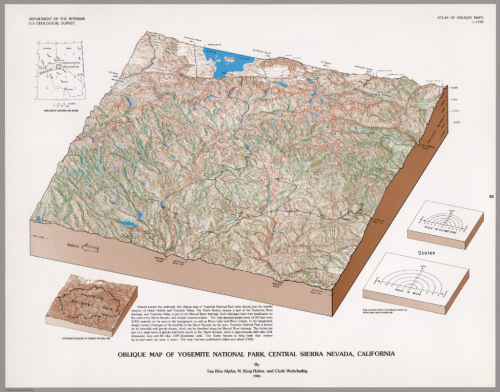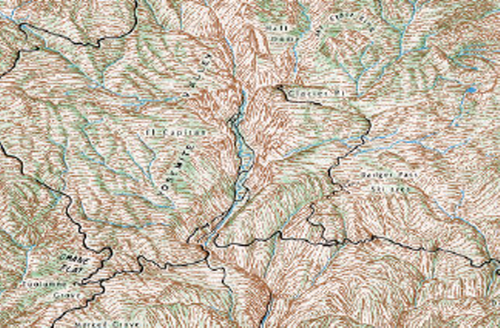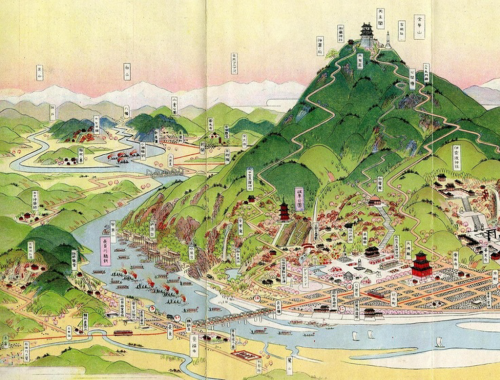The ability for modern web browsers to portray our world in three dimensions is perhaps now taken for granted. We’re able to pan, tilt and fly around Google Earth and other applications and see the terrain draped with all sorts of imagery and map layers. 3D has not always been so easy to portray. Traditional terrain representations such as hill-shading and contours are staple techniques but tilting the map until very recently meant creating a block diagram.
This block diagram of Yosemite National Park illustrates the technique with the map tilted to an oblique view. This would normally create a foreshortened image due to the perspective view but many block diagrams, instead, use an isometric projection so that scale is maintained across the image.
Of course, to construct these maps without the assistance of a computer, one requires a heavy artistic touch. This map is painted beautifully. It also makes use of the sides of the block, as if the map is extracted from the earth, to provide additional information. Other diagrams add to the overall display which creates a compelling view of the valley and the park.
Isometric block diagrams bring a certain scientific aesthetic to cartography yet they have traditionally been prepared by hand using techniques from some of the very best landscape artists such as Erwin Raisz.
A full version of the map can be downloaded from the David Rumsey Map Collection here.



